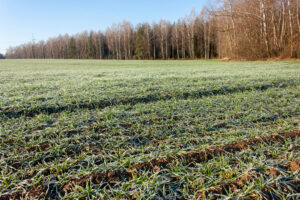The latest crop progress report from USDA says a handful of Wisconsin farmers are beginning to put corn and oats in the ground in some areas. If you’ve got cover crops, there are some things to keep in mind this year before you plant.
Daniel Smith is an outreach program manager with the Division of Extension. He specializes in cover crops. He walks us through cover crop termination, insect scouting, weed mitigation, soil tests, and herbicide residue:
Because of the mild winter, Smith saw cover crops do well in the field because there was no winter kill. Even turnips, crimson clover, and barley all made it through. If growers planned on winter kill, it makes things challenging because they likely did not budget for a tillage or herbicide pass.
But if producers wanted that green cover, these cover crop residues are still holding onto nutrients and can suppress weeds this spring.
However, green cover attracts bugs. Insect scouting is going to be important. Early-season insects will target early-season crops. The mild winter could make it an interesting year for bugs, says Smith.
Another implication of a drought year is that not a lot of nitrogen moved through the soil profile. You may not have used all the nitrate that you applied. Take a pre-plant nitrate test on fields where you thought the yield could have been better. You may have a nitrogen credit from last year, Smith advises.
Also because of the dry weather, your field may have herbicide carryover if you applied herbicide in the summer to suppress weeds in your corn or beans. That herbicide may not have broken down or decreased its active ingredients enough. That could challenge crops like alfalfa. Smith suggests reading your labels carefully.


